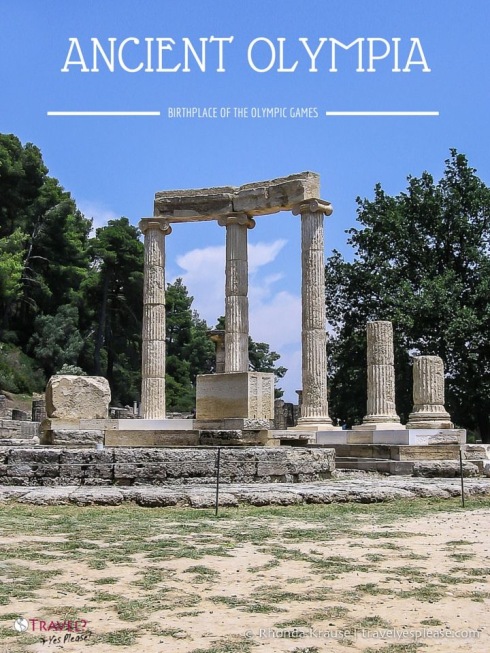 Olympia Greece is the site of the ancient Olympic Games, which were celebrated every four years by the Greeks. Olympia is situated in a valley in Elis, in western Peloponnisos (Peloponnesus), through which runs the Alpheus River. It was not a town, but only a sanctuary with buildings associated with games and the worship of the gods. Olympia is a national shrine of the Greeks and contained many treasures of Greek art, such as temples, monuments, altars, theaters, statues, and votive offerings of brass and marble. The Altis, or sacred precinct, enclosed a level space about 200 m (about 660 ft) long by nearly 177 m (nearly 580 ft) broad. In this were the chief centres of religious worship, the votive buildings, and buildings associated with the administration of the games.
Olympia Greece is the site of the ancient Olympic Games, which were celebrated every four years by the Greeks. Olympia is situated in a valley in Elis, in western Peloponnisos (Peloponnesus), through which runs the Alpheus River. It was not a town, but only a sanctuary with buildings associated with games and the worship of the gods. Olympia is a national shrine of the Greeks and contained many treasures of Greek art, such as temples, monuments, altars, theaters, statues, and votive offerings of brass and marble. The Altis, or sacred precinct, enclosed a level space about 200 m (about 660 ft) long by nearly 177 m (nearly 580 ft) broad. In this were the chief centres of religious worship, the votive buildings, and buildings associated with the administration of the games.
There is very little in the way if restoration; much of what is on view, was the result of archeological digs, in recent times. But the natural beauty of its setting alone, enhances that awareness of being in a special place.
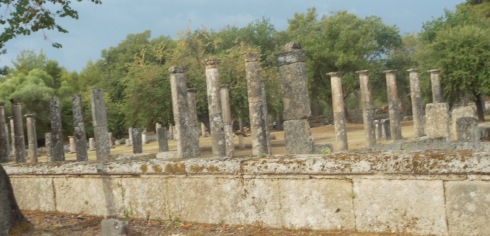

The French began excavations here in 1829. German explorations of 1875-81 threw much light upon the plans of the buildings; they were resumed in 1936, 1952, and 1960-61. Many valuable objects were discovered, the most important of which was a statue of Hermes, the messenger of the gods, by Praxiteles.

The most celebrated temple was the Temple of Zeus, dedicated to the father of the gods. In this temple was a statue of Zeus made of ivory and gold, the masterpiece of the Athenian sculptor Phidias. Next to the Temple of Zeus ranked the Heraeum, dedicated to Hera, the wife of Zeus. In this temple, probably the oldest Doric building known, stood the table on which were placed the garlands prepared for the victors in the games. The votive buildings included a row of 12 treasure houses and the Philippeum, a circular Ionic building dedicated by Philip II, king of Macedonia, to himself. Outside the Altis, to the east, were the Stadium and the Hippodrome, where the contests took place; on the west were the Palaestra, or wrestling school, and the Gymnasium, where all competitors were obliged to train for at least one month.


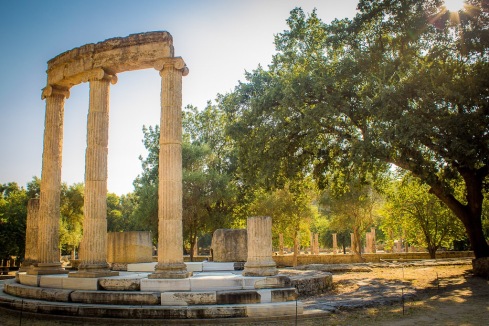
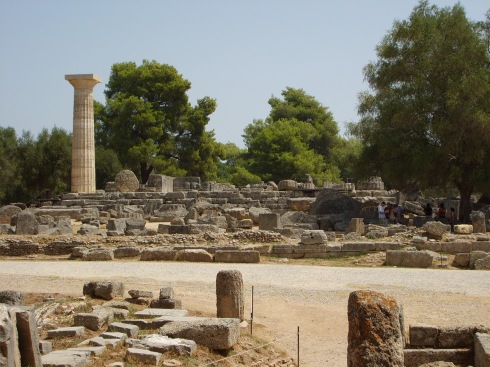
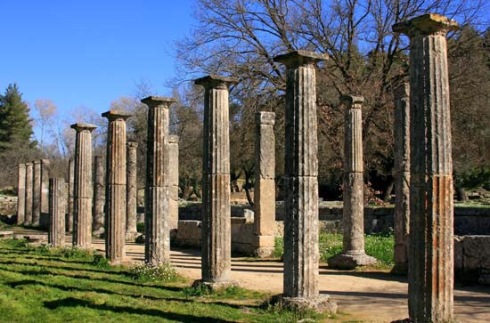
Being a sports fan, a dedicated watcher of the Olympic Games, I got a real thrill walking through the archway the athletes took en route, to the stadium, where the “Start” and ” Finish ” lines of stones, are still intact.
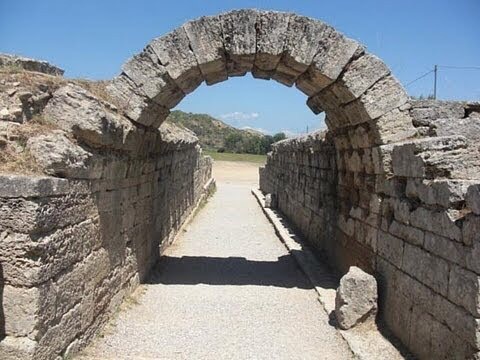
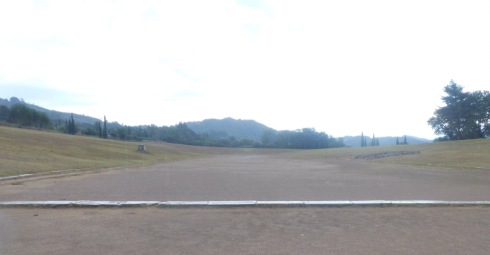
The Museum of the history of the Ancient Games, was very informative – women were not allowed even to watch, let alone participate. Any discovered were thrown off the top of a nearby mountain. Athletes had to be ” pure” Greek and take a pledge not to cheat. There was a line of statues dedicated to Zeus, with the names of ” cheats” displayed.

But the biggest chest of all, was the emperor Nero, who rigged the chariot race, despite falling off his chariot.
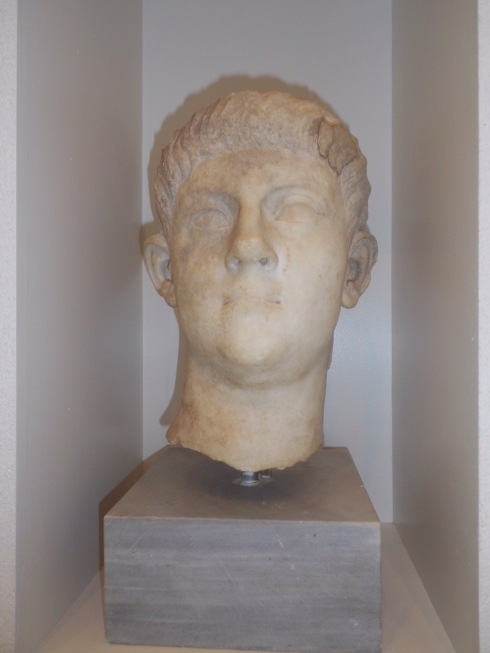
Prizes originally were no richer than a crown of Olives, but as the Games grew in fame and popularity, there were rewards a plenty for victors – plus la meme chose- freedom of the city, exemption from taxes.
There are still some beautiful mosaics, in place.
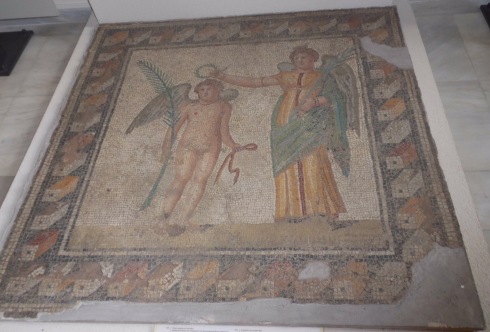

And one item, that did not have a helpful explanation board…Stil none the wiser.

The ” Truce” was respected for centuries – a unique aspect – can sport transcend politics?
Nobody sells the sports-as-diplomacy theme better than the Olympics, which aims “to build a peaceful and better world thanks to sport.” Most everything about the Games echoes these ideals: the interlocking Olympic rings that symbolize the coming together of the five continents, the determinedly harmonious atmosphere at Olympic village, and the very existence of the IOC’s Olympic Truce Foundation and its stated goal of finding “peaceful and diplomatic solutions to the conflicts around the world.”
The Olympic Truce is a tradition originating from Ancient Greece that dates back to 776 BC in the 8th century BC. A “truce” (Ancient Greek: ékécheiria, meaning “laying down of arms”) was announced before and during the Olympic Games to ensure the host city state (Elis) was not attacked and athletes and spectators could travel safely to the Games and peacefully return to their respective countries.
In 1998, the International Olympic Committee renewed this tradition by calling upon all nations to observe the Truce during the modern Games. The Truce was revived by United Nations Resolution 48/11 of 25 October 1993,as well by the United Nations Millennium Declaration relating to the world peace and security.
A memorable day at Ancient Olympia – get there before the coachloads, at 08.00 .
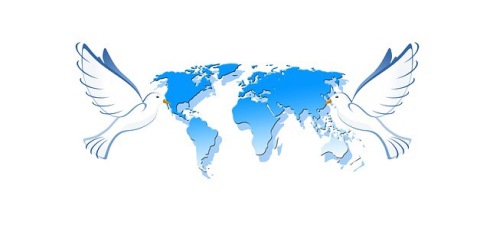

Leave a comment